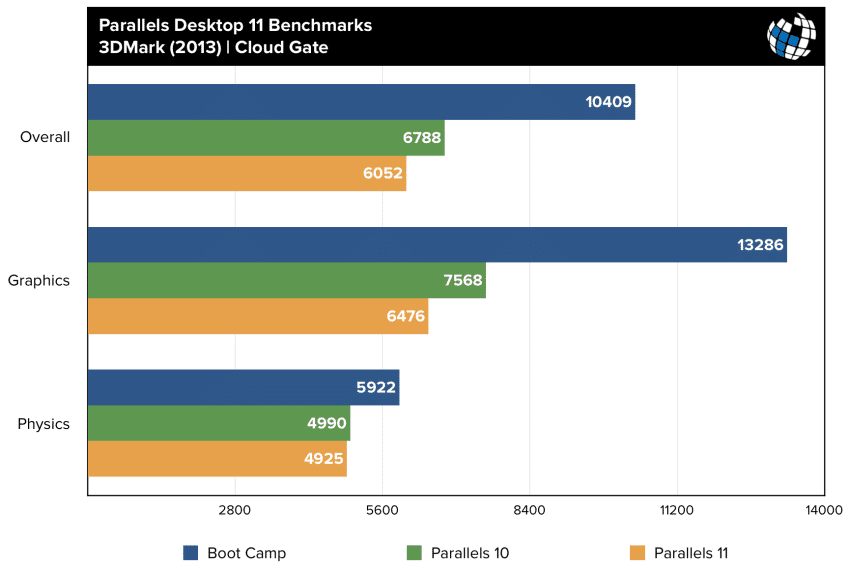
- #Vmware vs parallels mac os x#
- #Vmware vs parallels pdf#
- #Vmware vs parallels install#
- #Vmware vs parallels software#
- #Vmware vs parallels Pc#
When Vista "shockingly" found out that it had no music to play, it rushed to offer me the nearest audio library, namely my iTunes library. Needless to point out, I had ejected the disc ever since, but Vista didn't know that until today. I soon realized it might have had something to do with the fact that my last activity in Vista was actually listening to a DJ Tiesto audio CD. Strangest bug I ever saw, to be perfectly honest with you. After double clicking the DVD RW Drive icon, Windows Media Player started playing the songs currently available in my iTunes library. Vista failed to recognize the disc, so I decided to navigate my way to the medium. I inserted a copy of Tom Clancy's EndWar. Here's how I made Fusion mistake a CD for my iTunes library: In other situations, the user may need to use “Refresh” to see that shortcut added to the desktop.Īs I mentioned above, Fusion can experience a few issues if you take a snapshot while it's doing stuff like playing an audio CD, for instance. Also, simple actions such as dragging items from the Windows (Vista) Start menu to the Windows desktop (no actions outside the virtual machine) will sometimes have no impact. In VMware Fusion, recognizing a game disc after the user inserts it will sometimes fail, while OS X will ignore what its drive is being fed.
#Vmware vs parallels pdf#
Watch VMware Fusion video tutorial – Using the VMware Converter toolĭownload PDF manual for VMware Converter tool Perhaps you can share your experience in the comments. With the VMware Converter tool, the process is a bit different, but VMware explains it beautifully in the video tutorial, as well as via a PDF manual.
#Vmware vs parallels Pc#
Parallels uses a feature called Transporter to take your Windows setup from your PC and turn it into a virtual drive which can be launched after installing Windows with Parallels. While Fusion is the only one Floppy Disk-ready, both solutions can migrate your PC. VMware Fusion can see when a Floppy disk is inserted But not those who may want to mount a floppy disk image to the virtual machine! Fusion does that! You never know when you need it, right.?
#Vmware vs parallels install#
Also, you install it on the guest OS, so this may be considered an additional “drag” for Fusion users, who may eventually “drop” VMware's solution in exchange for Parallels'. Fortunately, VMware Tools doesn't cost a dime.
#Vmware vs parallels software#
While Parallels has drag & drop support between OS X and the guest OS “out of the box,” actions like copy-paste and drag & drop require additional software to be installed for Fusion users, particularly VMware Tools. However, Parallels' Coherence seems to do the job of unifying Windows and OS X a tad better. Unity and Coherence both spawn bugs when you're doing intensive tasks.

While in Unity mode (VMware Fusion), accessible Windows apps reside in the OS X menubar, under Applications, which basically works like the start menu in Windows. Basically, you have just the number of Vista applications and features when you need them, while your view isn't clogged up with the entire Vista desktop. In Coherence mode (Parallels), you can have Windows Vista applications right there in your OS X Dock, with no Vista desktop.
#Vmware vs parallels mac os x#
I'll explain why below.īoth Parallels and Fusion have this cool feature that allows the user to unify their experience with Mac OS X and Windows.

In either case, it is best not to have any flash drives or discs inserted in your system as you are taking the snapshot. Parallels, on the other hand, does the task much more smoothly. Creating a snapshot, for instance, will virtually strip you of any form of control over either OS, and the applications running in OS X implicitly. VMware's solution tends to be very resource hungry with most tasks. Both Parallels and Fusion have this tool. To do this, you must download (buy) an additional application, which installs on the machine you want to turn into a VM for Fusion and it builds itself. The importer application will not create a Fusion VM from a Windows Virtual PC VHD. Just be patient as Fusion imports your Parallels machine. In simpler words, both Parallels and Fusion boast the ability to use the same installation of Windows. If you've already used one of the two, and want to try and see what the other can do, importing one virtual machine into another is as easy as pie.

Below are dozens of other aspects to be taken into consideration before choosing your solution to run Windows on a Mac. However, for game fanatics, and especially those who are into the most recent releases, VMWare Fusion clearly handles the workload better. 0.2, I have no doubt that the former is much more reliable from a regular user's point of view. After my recent experience with two of today's most popular virtualization programs for Mac, Parallels Desktop 4.0 and VMware Fusion 2.


 0 kommentar(er)
0 kommentar(er)
